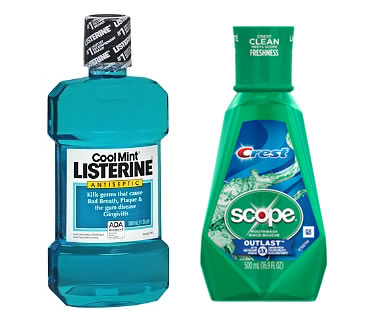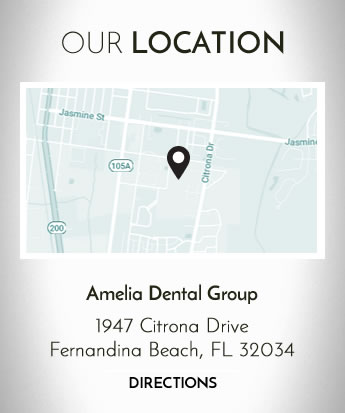
How much do you really know about your mouth? Most people understand basic brushing and flossing, but they may not realize the myriad of factors that influence dental health. Knowing how your lifestyle impacts your teeth and gums can help you make the best choices to protect your smile.
True or False: You don’t need to floss every day.
Answer: False. Brushing alone won’t protect your mouth from decay or gum disease. Floss gets hard-to-reach areas, cleaning out the plaque and bacteria that wreak havoc on your oral health.
True or False: Taking care of your tongue is important, so you should brush it regularly.
Answer: True. The tiny bumps on your tongue called papillae trap food and bacteria, which can cause bad breath. Brushing twice a day will keep your breath smelling great.
True or False: Soft drinks and sports drinks don’t damage teeth.
Answer: False. These beverages, as well as red wine and fruit juices, can lead to enamel erosion. It’s best to stick with water, but if you consume these drinks, rinse your mouth when you finish.
True or False: It’s okay to put your baby to bed with a bottle of juice or milk.
Answer: False. When you let your baby or toddler fall asleep with anything but water, you increase the risk of baby bottle tooth decay. This condition occurs because of prolonged bottle feeding, usually during sleep. Young children don’t have good plaque removal, so these beverages provide a breeding ground for bacteria.
True or False: Fluoride reduces decay 20 to 40 percent.
Answer: True. Drinking water with fluoride strengthens tooth enamel and also reduces the amount of acid that the bacteria in your mouth produce. Since fluoride was added to the drinking water supplies across the country, childhood cavity rates have dramatically dropped.
Schedule a dental cleaning appointment today at our Fernandina Beach dentists office.

Most people are well aware certain foods are bad for teeth, but did you know some are very good for oral health? Listed below are just a few of the foods that could help your teeth and gums stay in tip top condition.
Salmon
Salmon is packed full of vitamin D which helps your body to absorb calcium from other foods, keeping your teeth and bones strong and healthy.
Onions
Onions might give you temporary bad breath, but they also contain sulfur that lowers the amount of decay causing bacteria in your mouth.
Strawberries
Strawberries are high in fiber and vitamins C, ensuring your gums are able to repair themselves and fight infection.
Pineapple
Pineapple is also high in vitamins C as well as an enzyme called Bromelain which helps promote healing. In addition pineapple increases saliva production, helping to wash away excess bacteria and sugars that could cause disease.
Quinoa
This fashionable grain is full of minerals including magnesium, manganese, phosphorus and calcium, all of which help strengthen your teeth.
Sesame Seeds
Sesame seeds contain plenty of calcium, helping to strengthen your teeth.
Shiitake Mushrooms
Shiitake mushrooms not only taste delicious, but also contain something called Lentinan which helps prevent the growth of bacteria in your mouth.
Wasabi
Wasabi is a type of Japanese horseradish that contains particular compounds that inhibit the growth of bacteria in your mouth.
Sea Salt
Sea salt contains numerous different minerals that help strengthen teeth.
Xylitol
Your dentist in Reno may recommend chewing xylitol gum after every meal as this ingredient helps inhibit bacterial growth, reducing the risk of gum disease and cavities.
Stevia
Ordinary sugar promotes bacterial growth, increasing acidity in the mouth. Stevia is a natural sweetener that doesn’t have this effect.
Of course a great diet is only half the story, and needs to be backed up with professional dental care from your dentist in Reno, and great daily dental care at home.
Visit our Fernandina Beach dental office for a dental cleaning.

One of the greatest gifts you can give yourself is taking care of your oral health throughout your life. Practicing a consistent dental hygiene routine and maintaining regular visits to your general dentist are the best ways to increase your chances of a beautiful, healthy smile.
General dentists focus on preventive care and treating minor problems before they have a chance to worsen into serious issues. Even if you regularly brush and floss your teeth, plaque and tartar can be quick to develop. A dentist has the necessary tools and training to remove damaging deposits before they harm your smile. In addition to professional cleanings and examinations, most general dentists fill cavities, perform root canals, whiten teeth, and even offer additional cosmetic dental procedures like dental implants or veneers.
One of the main reasons for routine examinations is to identify various problems. One common issue that you want your general dentist to catch early is gum disease. When it is treated soon after it starts, you are more likely to avoid bone deterioration or tooth loss. The early stage of gum disease is called gingivitis and can be handled by your dentist with simple techniques. If it advances to periodontitis, that’s when bone or tooth loss become a possibility and more invasive procedures like scaling or root planing may be required.
Once you make your dental appointment, which is typically recommended every six months, make sure you keep your scheduled visit. Many patients fall victim to scheduling appointments and then cancelling, not realizing how important seeing your general dentist can be. If you have dental insurance, you can even use your dental benefits for examinations and treatments. This office accepts Blue Cross/Blue Shield of Louisiana, MetLife, and Cigna.
Choose a qualified general dentist and establish a long-term relationship now, so that you can enjoy your healthy and appealing smile for years to come.
We look forward to seeing you in our Fernandina Beach dental office

General Dentistry: A Comprehensive Overview
When we think of going to the dentist, it’s usually for a routine check-up, cleaning, or to have a pesky cavity filled. But what many people don’t realize is that these services fall under the umbrella of general dentistry, which encompasses a wide range of dental treatments and services.
What is General Dentistry?
In simple terms, general dentistry involves regular dental care aimed at preventing and treating common dental issues. This type of dentistry is focused on maintaining good oral health and keeping your teeth and gums healthy.
A general dentist is trained to provide various preventive, restorative, and cosmetic services that cater to the needs of patients of all ages. They help identify problems before they become major issues that could require more extensive treatment.
The Importance of Regular Dental Check-ups
Your oral health plays a significant role in your overall well-being. Neglecting your dental hygiene can lead to severe complications such as gum disease, tooth loss, heart disease, and even cancer.
Regular visits to a general dentist can help you prevent these problems from occurring by identifying any potential issues early. A typical dental check-up includes an examination of your teeth and gums for any signs of decay or inflammation.
Your dentist may also perform X-rays at regular intervals to track changes in the structure of your teeth or identify hidden issues such as impacted wisdom teeth. The earlier you catch any potential problems through routine check-ups, the easier they are to treat.
Plus you’ll save yourself time, money and pain by avoiding more extensive procedures later on. In our next section we will look more closely at what specific services fall under general dentistry so you can have an even better understanding about how it benefits you.
General Dentistry Services
When most people think of going to the dentist, they likely think of routine cleanings and exams. These are some of the most important services that general dentistry provides.
During a routine cleaning and exam, your dentist will check for any signs of tooth decay, gum disease, or other oral health issues. They will also clean your teeth to remove any tartar or plaque buildup.
X-rays and imaging are another essential part of general dentistry services. X-rays allow your dentist to see what’s going on beneath the surface of your teeth and gums.
This helps them identify any potential problems that may not be visible during a routine exam. Fillings and restorations are common general dentistry services that help repair damaged or decayed teeth.
If you have a cavity, your dentist will remove the decayed portion of your tooth and fill it with a dental filling material. In some cases, a tooth may be beyond repair with fillings and restorations, leading to the need for extraction.
Tooth extractions can be performed in-office by a skilled dentist with minimal pain and discomfort. Root canal therapy is another treatment option for severely damaged or infected teeth.
During this treatment, the dentist removes infected nerve tissue from within the tooth’s roots before filling it with a special dental material to prevent future infection. Overall, these general dentistry services serve as preventive measures against oral health issues while providing solutions for existing conditions when needed.
Preventative Care
Fluoride Treatments: Protecting your Teeth from Decay
When it comes to caring for your teeth, prevention is key. And one of the most effective preventative measures you can take is getting regular fluoride treatments.
Fluoride is a natural mineral that helps to strengthen your tooth enamel, making it more resistant to decay. Fluoride treatments are quick and painless, and can be done in just a few minutes during your regular dental cleaning.
Sealants: Preventing Cavities before they Start
Another important preventative measure you can take is getting dental sealants. Sealants are a thin coating that is applied to the surface of your teeth, covering the deep grooves and pits where bacteria like to hide. This helps prevent cavities from forming in those hard-to-reach areas, making it easier for you to maintain good oral health.
Oral Cancer Screenings: Early Detection Saves Lives
Oral cancer may not be something you think about often, but it’s important to get screened regularly. With early detection, oral cancer can be treated successfully in many cases.
During an oral cancer screening, your dentist will examine your mouth for any signs of abnormal growths or other issues. It’s a quick and painless process that could potentially save your life.
Gum Disease Treatment: Keeping Your Gums Healthy
Gum disease is a common problem that affects many people at some point in their lives. It occurs when plaque builds up on the teeth and gums, causing inflammation and eventually leading to infection if left untreated. Fortunately, gum disease can usually be treated with a simple procedure called scaling and root planing.
During this treatment, your dentist will clean beneath the gum line to remove any built-up plaque or tartar and smooth out the roots of your teeth to help prevent further buildup. If you have gum disease, it’s important to get it treated as soon as possible to prevent more serious complications down the road.
Cosmetic Dentistry Options
Teeth Whitening: Brighten Your Smile
Are you tired of feeling self-conscious about your stained or yellowed teeth? Teeth whitening is a popular cosmetic dentistry option that can help restore your confidence. There are many methods available, including in-office treatments, take-home trays, and even over-the-counter products.
Most whitening options use a bleaching agent to break up stains and discoloration on the enamel surface of your teeth, leaving you with a brighter smile. Keep in mind that while teeth whitening is safe for most people, it’s important to consult with your dentist first to ensure that you’re an ideal candidate for this procedure.
Veneers: The Ultimate Smile Makeover
Veneers are thin, custom-made shells that cover the front surface of your teeth to improve their appearance. They can be used to correct a variety of imperfections such as chips, cracks, stains or misaligned teeth. Veneers are made from either porcelain or composite resin material and are bonded permanently to the front of your teeth.
This means you can enjoy long-lasting results with little maintenance required! If you’re looking for a dramatic smile transformation without invasive procedures like braces or surgery, veneers might be right for you.
Invisalign: Straighten Your Teeth Discreetly
Invisalign aligners are an increasingly popular alternative to traditional metal braces. These clear plastic trays gradually shift your teeth into the desired position over time without any discomfort associated with traditional braces. One of the biggest advantages of Invisalign aligners is that they’re virtually invisible – meaning no one will know that you’re undergoing orthodontic treatment!
Plus, they offer added convenience because they can be removed during meals and dental hygiene routines (like brushing and flossing). However, it’s important to note that Invisalign may not be right for everyone, and it’s essential to consult with your dentist to determine the best orthodontic treatment plan for your needs.
Specialized Dental Services
While general dentists provide a range of services, there are some dental needs that require specialized attention. Two of these areas are pediatric dentistry and geriatric dentistry.
Pediatric Dentistry
Pediatric dentists specialize in providing dental care to children until they reach adulthood. Children have unique dental needs, and their teeth and mouths change rapidly as they grow. Therefore, it is important for children to receive specialized care from a dentist who is trained to work with them.
Some of the services provided by pediatric dentists include preventive care like cleanings and fluoride treatments, as well as treatment for cavities and other common issues. Pediatric dentists also focus on education – teaching children how to take care of their teeth through brushing, flossing, and other healthy habits.
Geriatric Dentistry
Geriatric dentists specialize in treating older adults – typically those over the age of 65. As people age, they often face a range of dental issues that require specialized attention. Some common issues include gum disease, dry mouth (which can be caused by medications or certain medical conditions), tooth loss or decay due to years of wear-and-tear on the teeth, and even oral cancer.
Geriatric dentists provide preventive care like cleanings and exams but also may offer more targeted treatments for specific conditions. In addition to treating specific dental issues, geriatric dentists may also work with other healthcare providers to ensure that their patients receive comprehensive care that meets all their health needs as they age.
Emergency Dental Care
Emergencies can happen at any time, including dental emergencies. A dental emergency is a serious issue that requires immediate attention from a dentist to save a tooth or prevent further damage to the mouth. It is important to know what constitutes a dental emergency, so you can act quickly and prevent further damage.
Common dental emergencies
A knocked-out tooth, severe toothache, broken or chipped teeth are all examples of common dental emergencies. A knocked-out tooth can usually be saved if you act quickly by placing the tooth back in its socket or keeping it in your mouth until you see a dentist. A severe toothache could signal an infection that requires immediate attention to prevent it from spreading.
A broken or chipped tooth can be painful and also affect your appearance. If left untreated, it could lead to decay and further problems down the line.
What to do in case of a dental emergency
The first step when faced with a dental emergency is not to panic. Stay calm and assess the situation before taking action. In case of a knocked-out tooth, rinse it with water and place it back into its socket if possible.
If that is not possible, keep the tooth moist by placing it in your mouth or in milk until you reach the dentist’s office. For severe pain, rinse your mouth with warm salt water and take over-the-counter pain relievers like ibuprofen.
It’s important to get help immediately for any kind of dental emergency because quick action can make all the difference between saving or losing a damaged or infected teeth. Call your dentist right away for advice on what steps should be taken next depending on specific urgent problem being faced at that moment.
Knowing what constitutes as an emergency situation when it comes to dentistry will help you make better decisions about how best deal with such situations as they arise. Keep your dentist’s contact information handy so you can get in touch with them quickly in case of an emergency.
Schedule an Appointment
Overall, general dentistry services are critical for maintaining good oral health. By regularly visiting a dentist for routine cleanings and exams, you can prevent more serious dental issues down the line.
Additionally, preventative care measures such as fluoride treatments, sealants, and oral cancer screenings can help catch any potential problems early on. Beyond just preventing dental issues, general dentistry also offers cosmetic options such as teeth whitening, veneers, and Invisalign.
These services can improve the appearance of your teeth and boost your confidence. It’s important to note that specialized dental services such as pediatric and geriatric dentistry are also available to cater to specific age groups’ needs.
In case of a dental emergency, it’s essential to know what steps to take and where to go for help. Quick action can save your tooth or relieve pain.
Don’t wait until you experience a problem with your teeth or gums before seeking out general dentistry services. Regular check-ups and preventative care measures are key to maintaining excellent oral health throughout your life.
Are dental issues holding you back? Take control of your oral health by booking an appointment with our experienced team at our Fernandina Beach dental office.

Keeping your teeth and gums in good condition can mean the difference between being embarrassed to smile and being happy to display your pearly whites. Your smile is one of the first things people notice, so here are some things to add to your dental care routine so that your teeth are sparkling and healthy.
Brush after consuming staining items:
Avoid foods and drinks that are known to stain your teeth, such as coffee, red wine, colored gravies, and dark colas. Brush your teeth as soon as possible after consuming such items. If brushing isn’t possible, try eating an apple to help clean away staining residue.
Change your toothbrush:
Old bristles that are out of shape and worn harbor bacteria and don’t as good of a job as newer brushes. Change your toothbrush every three months, or when it starts to look worn. Remember to choose a brush with soft bristles for the best treatment of your teeth and gums.
Floss regularly:
Use dental floss at least once every day to clean between your teeth and along your gums. Carry floss with you so that you can quickly use it in private moments after a meal or bothersome snacks.
Use mouthwash:
Add mouthwash to your daily routine to help kill bacteria that your toothbrush doesn’t reach. It also can help improve your breath.
See your dentist:
No matter how well you care for your mouth, see your dentist every six months for checkups and professional cleanings. This will not only keep your teeth bright, it will catch any problems early in hopes of avoiding more extensive dental work in the future.
Schedule your appointment at our Fernandina Beach dental office

Using mouthwash is not a replacement for brushing and flossing, but instead is an addition to your oral care routine that can help you maintain healthy teeth and gums. If you’ve visited the mouthwash aisle at your local drugstore lately, you’ve seen that there is a giant selection of brands and types to choose from. It can be a bit overwhelming if you don’t know what purpose each one serves. Here is a description of the most common types of mouthwashes to help you choose.
Antiseptic
The goal of antiseptic mouthwash is to kill germs and bacteria in your mouth. It can also combat gum disease and persistent bad breath. Most dentists recommend that you discuss using antiseptic mouthwash with them before selecting this type, because they can help you decide if it’s needed for you. It can impact your sense of taste and can stain your teeth, so you want to be sure it’s helpful for you before using it.
Fluoride
The most common kind of mouthwash is fluoride, which utilizes the natural abilities of this mineral to strengthen your tooth enamel and prevent tooth decay and cavities.
Cosmetic
Designed to disguise bad breath, or halitosis, cosmetic mouthwash does not offer protection from problems like tooth decay. It can help keep your teeth clean and help rinse away food particles, but it is mainly for freshening your breath.
Combination
Mouthwash that combines purposes of the product is called combination mouthwash. It is meant to prevent tooth decay, maintain your oral health, and freshen your breath.
Prescription
Sometimes a prescription mouthwash is warranted for patients with gum disease or other types of decay. See your dentist to find out it this type of mouthwash would benefit you.
If you live in the Fernandina Beach area and you need a general dentist, contact us today.







